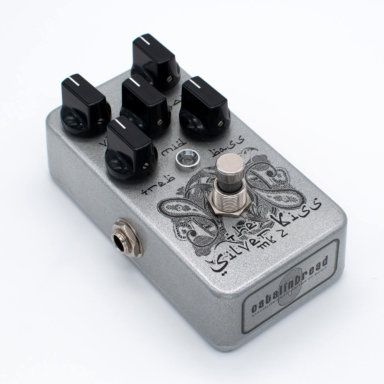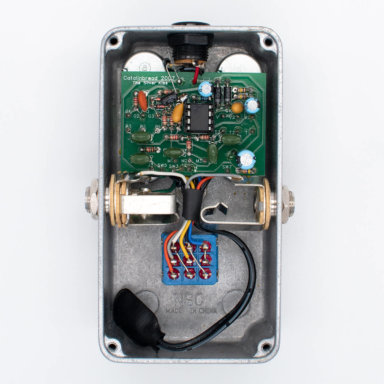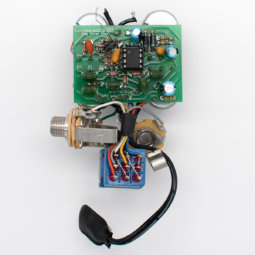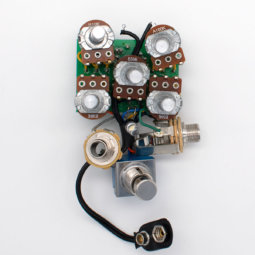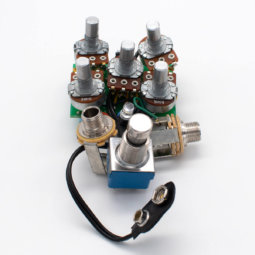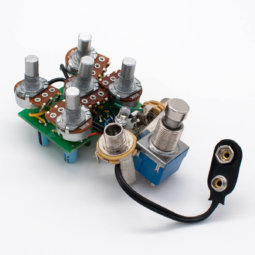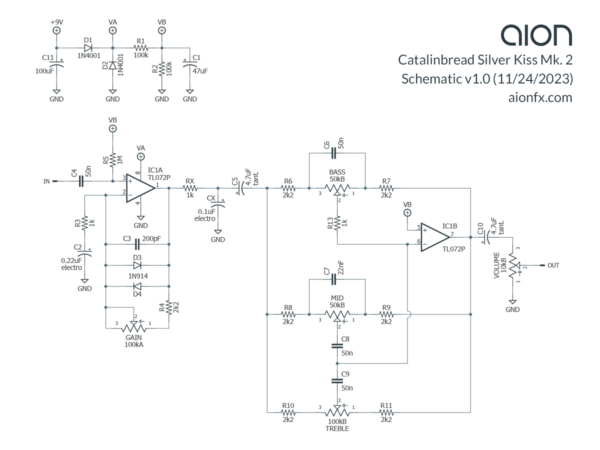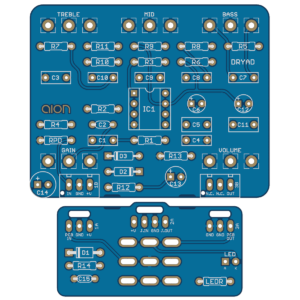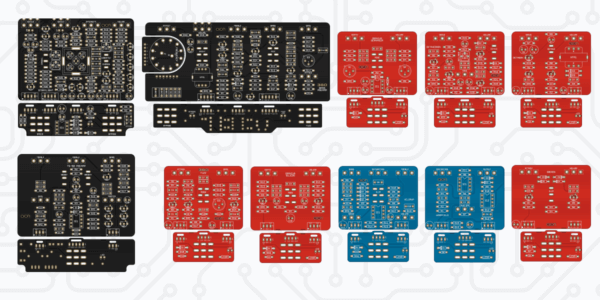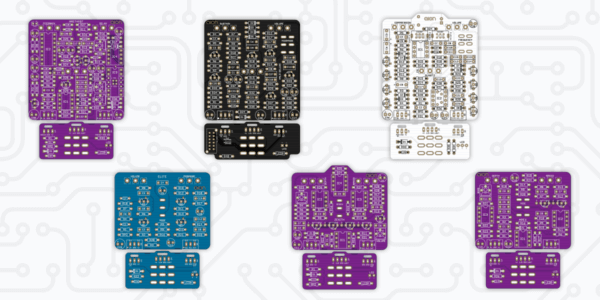
Tracing Journal: Catalinbread Silver Kiss Mk. 2
The Catalinbread Silver Kiss was first released in 2007. It’s a more traditional overdrive than their other offerings, but with the addition of an active 3-band EQ. Here’s a demo from Gearmanndude:
The discussion at Freestompboxes first began in 2008. Several shots of the PCB were provided, and Catalinbread offered the hint that the 3-band EQ was similar to (perhaps inspired by) this circuit diagram. A few people attempted a trace, but it was never actually finished.
Versions
Despite the relatively short production lifetime, there were actually five different versions of the circuit.
1. Cabaretlinda Silver Kiss: For a brief period of time, Catalinbread decided to brand prototypes and pre-releases as “Cabaretlinda”, which is an anagram of the company name. As far as we’re aware, the Silver Kiss was the only pedal that actually appeared under this name. We’ve seen several of these on Reverb with serial numbers up to around 100, so they aren’t only in-house prototypes and seem to have been available for sale early on.
2. Silver Kiss Mk. 1: Not labeled Mk. 1, but this was the first commercial version of the circuit. and was likely the same internally as the Cabaretlinda units.
3. Silver Kiss Mk. 2: The most common version of the circuit and the one we’re tracing here. The company was not happy with the way the Mk. 1 sounded, and a lot of customers felt the same way, so they made some tweaks before re-releasing it as the Mk. 2. Customers were able to send in their Mk1’s to get them modded to Mk2 specs, so it was probably not a major circuit overhaul. According to one of their employees, around half of the Mk1 owners sent their unit in for the Mk2 mod once it was available.
4. Silver Kiss Mk. 2 American Edition: Catalinbread released three “American Edition” pedals around 2008-2009, the other two being the Teaser Stallion and Semaphore Tremolo. These pedals were so named because (so they say) Americans have larger feet and prefer bigger boxes. We’re not sure this is quite the perceptive cultural commentary they felt it was, as it wasn’t too long after 2009 that the mini-pedal craze began. Regardless, the AE pedals are about twice the size of the original 1590B units with more space for the stomp switch. Two of the three have extra features. The Silver Kiss in particular has two toggle switches: a switch called “Comp” that seems to select between diodes, and a “Mid Shift” switch that probably changes the frequency of the midrange EQ band.
5. Silver Kiss Trinity American Edition: We couldn’t find much first-hand info about this, but presumably “Trinity” is a more creative way of saying “Mk. 3”, since the “Trinity” text replaced “Mk. 2” on the enclosure artwork. The features and artwork are identical to the Mk2 except for the “Trinity” text and the fact that “American Edition” is color rather than black & white. The Trinity never appeared in a standard-size version, and since they’re fairly rare, we would assume they were not available for long.
Tracing photos
Schematic
Analysis
No huge surprises here. The input stage is similar to a Tube Screamer with diodes in the feedback loop of a non-inverting op-amp stage. And the 3-band EQ is pretty much identical to the circuit fragment they mentioned as inspiration, just tweaked to better match guitar frequencies. It’s a similar topology to a Baxandall, but with an added midrange band.
Interestingly, the EQ section also happens to be very similar to the 3-band EQ from the Cornish GC-1 and CC-1. It’s unlikely that Pete was directly inspired by this pedal since it’s fairly obscure, but worth noting that the Silver Kiss did predate the CC-1 by six years.
There’s not much more to the circuit than these two circuit blocks, but the simple architecture does lend itself very well to transparency. Like the Timmy, there’s very little tonal coloration and a lot EQ control.
Added components
The PCB is dated 2007, which is the year that the Mk. 1 was released. If you look at the photos, the PCB has an extra resistor and capacitor (labeled Rx and Cx in our schematic) that are wired offboard from the “+” pad of the C5 tantalum capacitor. This forms a low-pass filter above 1.6kHz immediately before the tone control.
This is the same as the Tube Screamer’s pre-tone R-C filter, but cutting at twice the frequency (the Tube Screamer is 723 Hz). This likely constitutes most or all of the differences between Mk. 1 and Mk. 2, and it indicates that the complaints about Mk. 1 were probably related to it having too much high-end.
Dryad Transparent Overdrive
Releasing today is our version of the Silver Kiss Mk. 2, called the Dryad. It’s a straight adaptation based on our trace with no added features or modifications.
